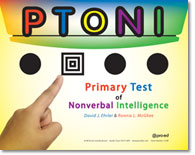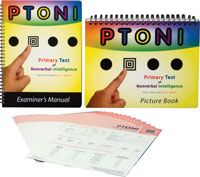

The TOPS-3E:NU assesses a school-age childs ability to integrate semantic and linguistic knowledge with reasoning ability by way of picture stimuli and verbal responses.
The CAYC is an easy-to-administer screening instrument for early identification of children with developmental delays. This newly revised and updated version of the DASI-II (Developmental Activities Screening Inventory-II) was normed on a nationally stratified sample of 743 children.
The Executive Functions Test-Elementary: Normative Update assesses how students use language in various executive functions, such as working memory, problem solving, inferring, predicting outcomes, and shifting tasks.
The CTONI-2 (2009 revision) is a popular norm-referenced test that uses nonverbal formats to measure general intelligence of children and adults whose performance on traditional tests might be adversely affected by subtle or overt impairments involving language or motor abilities.
The BRIEF-2 is a set of questionnaires for parents, teachers, and now older students (ages 11-18), designed to evaluate executive function from multiple perspectives.
TIPS assesses how information (either visual or auditory) is processed and retained (in sequence or not) in persons 5 - 90+ years. Delayed recall, semantic fluency, and the effects of interference on recall and learning are also quantified.